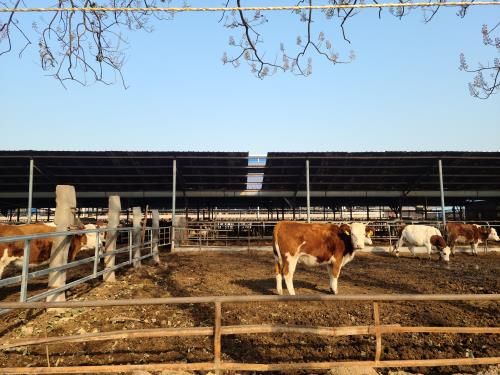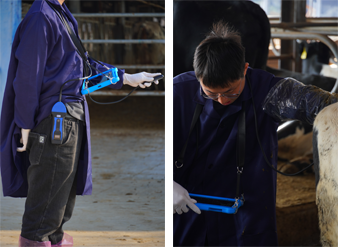Ultrasound imaging, or ultrasonography, is one of the most valuable tools in modern veterinary diagnostics, providing non-invasive insight into soft tissue, cardiovascular, and reproductive systems. Despite its proven utility and the increasing affordability of portable systems, many livestock veterinarians worldwide still do not use or offer ultrasound services regularly. This raises an important question: why are there so few veterinarians equipped with and proficient in ultrasound technology?
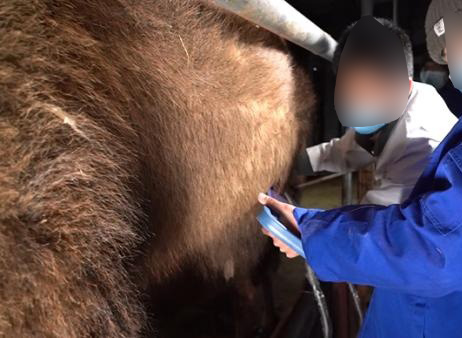
The Value of Ultrasound in Veterinary Practice
Ultrasonography relies on high-frequency sound waves (typically 1.5–18 MHz) emitted by a transducer, which bounce off tissues at different densities. These echoes are received and transformed into real-time images that help evaluate internal structures such as the liver, kidneys, uterus, heart, and tendons. Its advantages include safety, non-invasiveness, repeatability, and the ability to perform procedures like pregnancy diagnosis or guided biopsies without surgery.
In large animal practice, especially among bovine and equine specialists, ultrasound plays a vital role in reproductive monitoring, tendon assessment, and abdominal examination. Transrectal ultrasound for pregnancy checks and ovarian evaluation in cattle is a routine application. Musculoskeletal ultrasound in horses helps in diagnosing soft tissue injuries before clinical signs worsen. Despite all these benefits, ultrasound is still underutilized in many veterinary settings.
Key Reasons Behind Limited Veterinary ultrasound Adoption
1. Lack of Training and Experience
One of the primary obstacles is the steep learning curve. Effective ultrasound use requires not only understanding anatomy but also real-time interpretation of 2D grayscale or Doppler images. Unlike radiography, where interpretation can be outsourced to radiologists, ultrasound is operator-dependent. Improper scanning angles, inadequate contact, or poor probe manipulation can result in suboptimal images.
Veterinary curriculums in many countries only briefly touch on ultrasound during training. Many livestock veterinarians graduate without hands-on experience. Without continuing education or residency opportunities in imaging, many practitioners lack the confidence or skillset to use ultrasound effectively.
“Ultrasound is highly operator-dependent. Without proper technique and anatomical knowledge, misinterpretation is a real risk.” — American College of Veterinary Radiology
2. Cost of Equipment and Maintenance
Although prices have come down over the last decade, ultrasound systems still represent a significant investment, especially for solo practitioners or those in developing regions. High-resolution machines suitable for tendon scans or reproductive evaluations in large animals can cost between $8,000 and $25,000.
In addition to the machine, costs include:
Specialized transducers (linear, convex, micro-convex)
Gel and accessories
Maintenance and calibration
Data storage and DICOM compatibility
For some veterinarians, especially those serving low-income or rural clients, the return on investment is not immediately obvious.
3. Field Conditions and Practical Limitations
Large animal veterinarians often work in barns, fields, or rural clinics where environmental factors—dust, poor lighting, animal movement—make ultrasound use difficult. Unlike small animal clinics with designated imaging rooms, field practitioners must rely on portable and durable machines, which may sacrifice image quality for mobility.
Moreover, ultrasound imaging of certain organs (like the bovine spleen or deep abdominal structures in large ruminants) can be technically challenging due to gas interference or depth limitations.
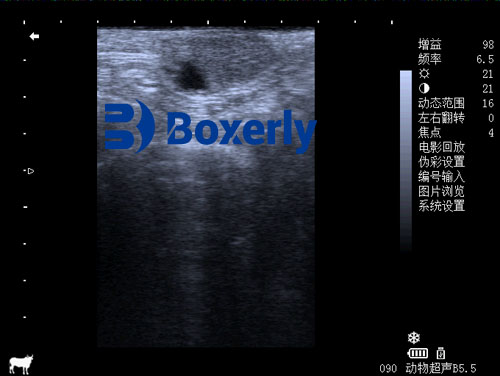
4. Cultural and Professional Inertia
In some regions, traditional diagnostic methods such as palpation, auscultation, or visual inspection remain preferred. Older veterinarians or those trained before ultrasound became mainstream may be reluctant to adopt new tools, especially if clients do not request or value imaging services.
Additionally, clients often lack awareness of how ultrasound can improve animal welfare and decision-making. Without demand, veterinarians have little incentive to invest time or money into training.
5. Limited Access to Continuing Education
While advanced countries have abundant continuing education courses, hands-on workshops, and online training, this is not the case globally. In many regions, rural or large-animal vets lack access to affordable, high-quality ultrasound training. Without mentorship or clinical case exposure, proficiency remains out of reach.
Consequences of Limited Ultrasound Use
When veterinarians lack access to ultrasound, the consequences can be significant:
Delayed Diagnosis: Conditions like pyometra, ovarian cysts, or internal bleeding may go undiagnosed until clinical signs are advanced.
Reproductive Inefficiencies: Manual palpation is less accurate than ultrasound in early pregnancy detection and ovarian assessment.
Increased Use of Invasive Methods: Without real-time imaging, biopsies or fluid sampling may rely on “blind” techniques, increasing risks.
Misinterpretation of Lameness or Tendon Injuries: Musculoskeletal issues in performance animals may go undiagnosed or mistreated without imaging.
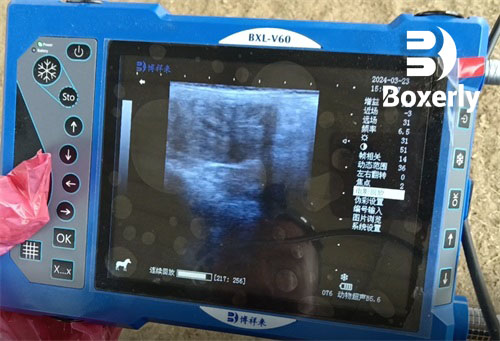
The Path Forward: Increasing Ultrasound Adoption
1. Expanding Training Opportunities
Veterinary schools should integrate hands-on ultrasound training in the core curriculum, especially in reproduction and internal medicine rotations. Online courses with case-based learning, virtual simulators, and regional workshops can help fill current gaps.
2. Affordable and Field-Ready Equipment
Manufacturers are increasingly producing rugged, portable ultrasound systems optimized for farm use. Battery-powered models, wireless probes, and simplified user interfaces make ultrasound more accessible than ever. Grants or subsidies may also help small clinics acquire equipment.
3. Promoting Awareness Among Clients
Educating farmers and livestock managers on how ultrasound improves herd health, reproductive efficiency, and long-term cost savings can create client-driven demand. When farmers understand the value, they’re more likely to request—and pay for—these services.
4. Telemedicine and Expert Consultation
Ultrasound telemedicine allows field veterinarians to consult remotely with imaging specialists. Images or video clips can be shared in real-time for expert interpretation, enabling rural vets to offer advanced diagnostics without full training.
Conclusion
Veterinary ultrasound is a transformative diagnostic tool with vast potential in livestock health management. However, several barriers—ranging from education and cost to logistics and culture—have prevented widespread adoption among veterinarians, particularly in large animal practice.
To address the shortage of vets proficient in ultrasound, a multipronged approach is needed: investing in education, making technology accessible, raising client awareness, and fostering collaboration through telemedicine. With such efforts, ultrasound could become as routine in veterinary care as it is in human medicine.
References
American College of Veterinary Radiology. “Ultrasonography.” https://www.acvr.org
Veterinary Practice News. “Training in Ultrasound: Is It Worth the Time and Money?” https://www.veterinarypracticenews.com
BVA (British Veterinary Association). “Improving Farm Vet Skills in Imaging.” https://www.bva.co.uk
Drost, M. "Ultrasound in Cattle Reproduction." University of Florida. https://vetmed.ufl.edu
link: https://www.bxlimage.com/nw/1202.html
tags:
